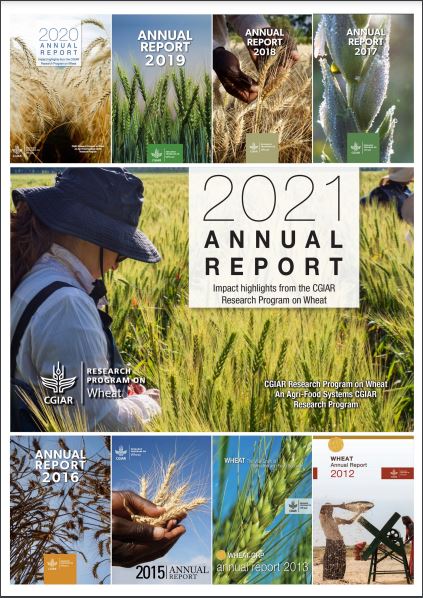Staple cereals will continue to play a critical role in global efforts towards food security, contributing nearly half of both daily calories and protein intake in low- and middle-income countries. In wheat and maize value chains in Africa and Asia, the stability and utilization dimension of food security merits increased research attention. Considerable benefits in yields and sustainability were found in integrated systems in sub-Saharan Africa, where maize, wheat, livestock production and agro-forestry were practiced together – see Table 10 (4430). In related, CRPindependent research, scientists found that the diffusion of modern crop varieties during the Green Revolution reduced infant mortality by 2.4-5.3% – implying significant health benefits from increases in agricultural productivity and improved varieties. Better estimates of the number and distribution of crop-specific farms will lay the foundation for agricultural policy and R&D efforts in the Global South. A fifth of all farms globally grew wheat in 2020, a number expected to decrease by 4% in 2030. Wheat is cultivated on 216 M ha (2020); 29% of which is in lower- and lower-middle income countries (L/LMICs). Compared to high-income countries (HICs), LICs have more than four times the number of farms, ten times the rural population, half the agricultural area and a tenth of the average farm size. Farms remain the foundation for much of the rural populace in L/LMICs– see Table 10 (4432). Climate change will decrease global wheat production by −1.9% by mid-century; the most negative impacts are projected to affect developing countries in tropical regions. Models suggest large, negative yield impacts for African (-15% by 2050) and Southern Asian countries (-16% by 2050), where food security is already a problem. Introducing new, climate change-tolerant crop genetic traits as an adaptation response to climate change would improve wheat yield in many regions. One hopeful sign is that breeding research continues to deliver increased grain yields despite climate warming– See Table 10, (4338) and FP3. Innovations in modeling for resource-constrained scenarios will help to maintain breeding breakthroughs – see Table 10, (4341) and FP3. However, due to poor soils and nutrient management, many developing countries will only successfully climate-adapt if more nitrogen fertilizer were deployed– see Table 10 (4326). In 2021, WHEAT co-funded ‘A “more ammonium solution” to mitigate nitrogen pollution and boost crop yields,’ which points to Biological Nitrification Inhibition to foster soils with a more even mix of nitrogen sources, including the less-chemically-reactive compound, ammonium. Scientists investigated dietary adaptation mechanisms to climate change-driven impacts on nutrient levels in staple grains, which might drive mineral deficiencies amongst at-risk populations. By pairing nutritional, dietary health analyses, researchers found that replacing refined grains with whole grains could help compensate for climate change-related reductions in iron and zinc concentrations in wheat, rice and maize. Additionally, it could improve fiber intake, protein deficiencies, and reduce mortality from chronic disease. Researchers recommend a timestaggered approach: in the short-term, increase the ratio of whole grains to refined grains in diets; in the medium- to long-term, improve healthiness and sustainability of diets – see Table 10 (4420) and Innovation #2597. COVID-19: WHEAT researchers collaborated with the CGIAR Research Program on Agriculture for Nutrition and Health (A4NH)-led COVID-19 Hub to publish a descriptive analysis of the most critical, immediate effects of COVID-19 for different kinds of agricultural systems and their associated value chains in Central America and Mexico. A similar analysis in South Asia showed that Asian farming and food systems were moderately resilient, reinforced by government policies that prioritized food availability and affordability. Rural livelihoods and food security suffered from disruptions to local labor markets (especially for off-farm work), farm produce markets (notably for perishable foods) and input supply chains (i.e. seeds and fertilizers).

